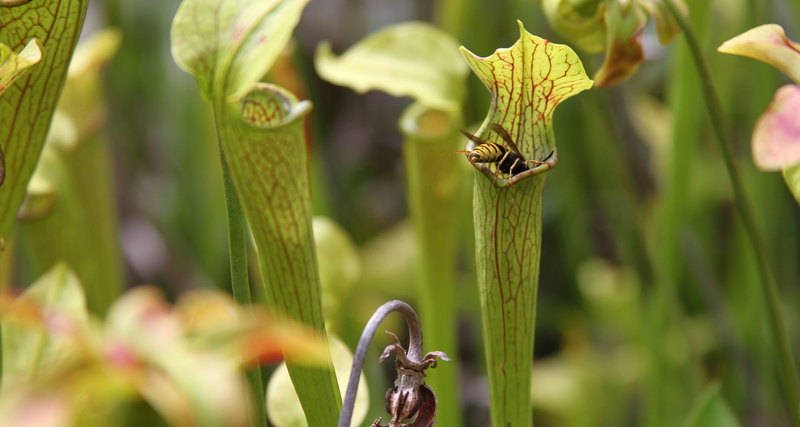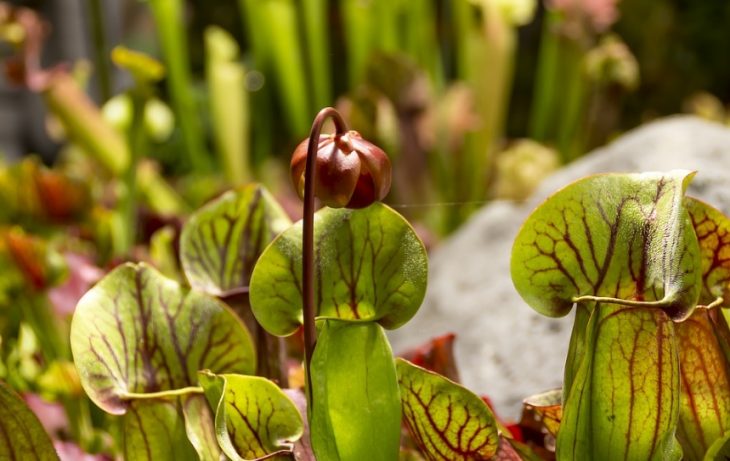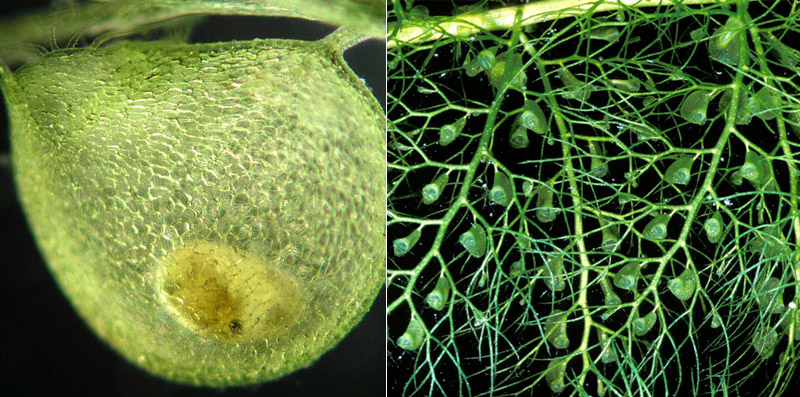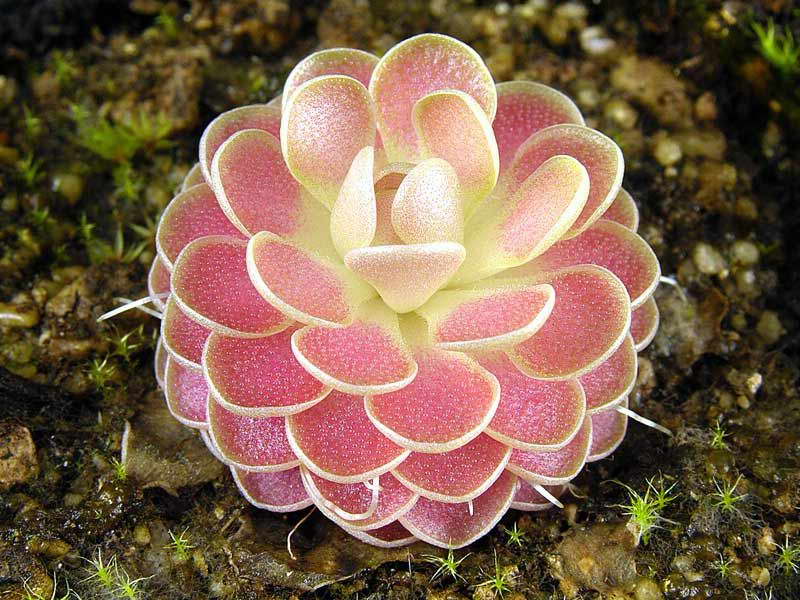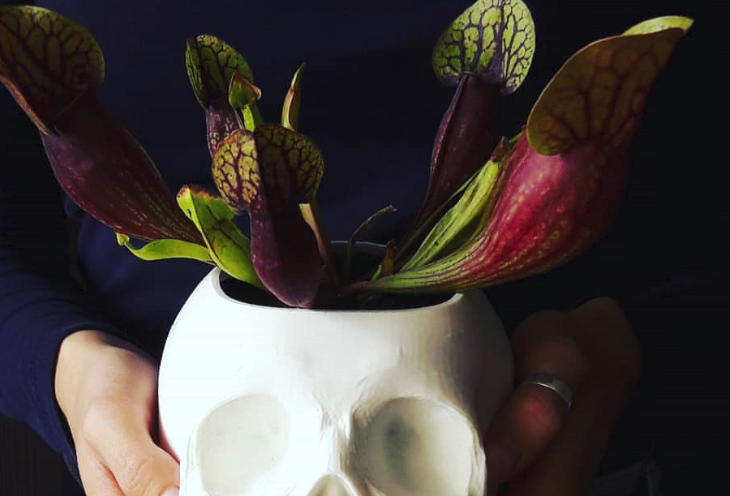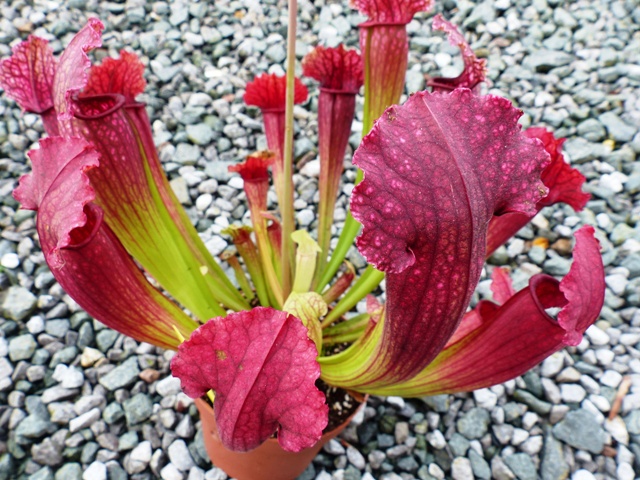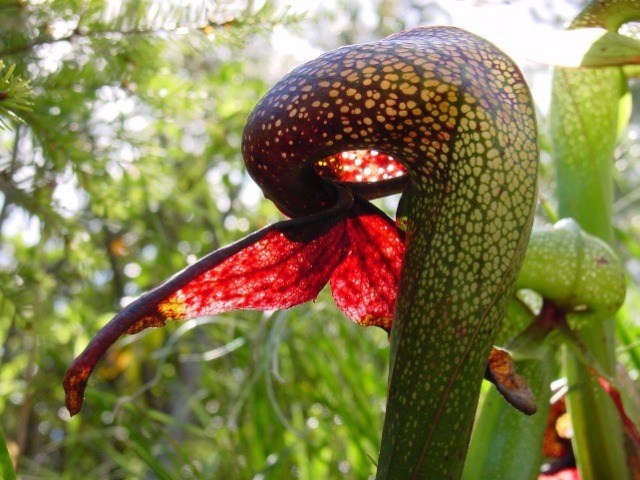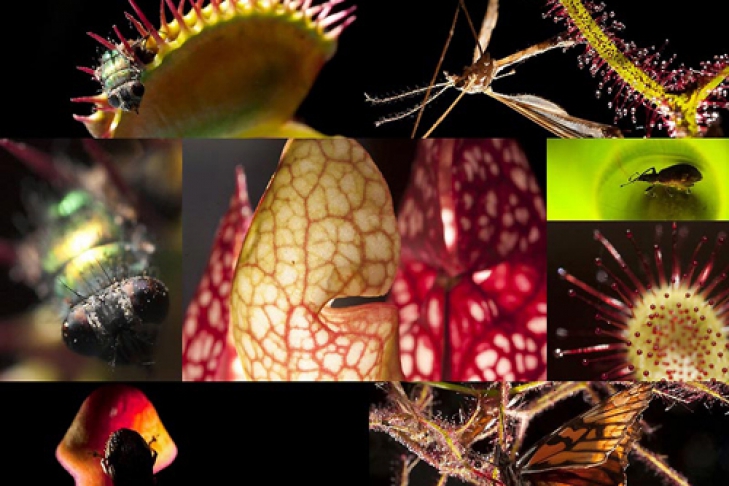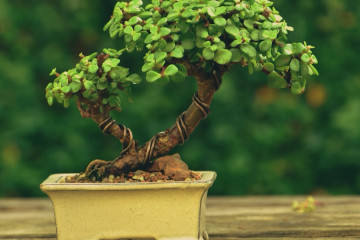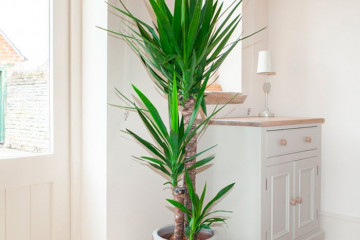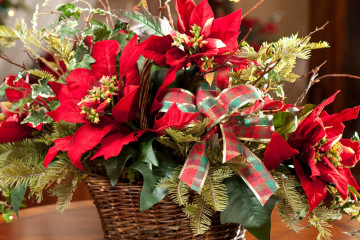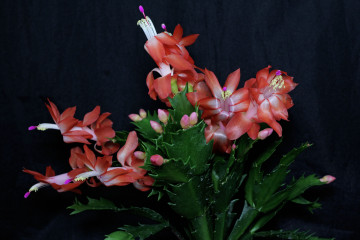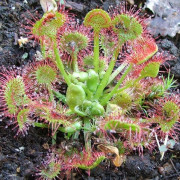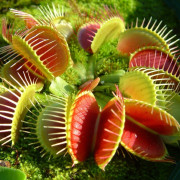Carnivorous plants - carnivorous flowers at home
Content:
Predatory plants are considered unique representatives of the flora that feed on insects. Despite their aggressive behavior towards midges, mosquitoes and flies, they are considered not only very useful, but also quite decorative.
It is interesting to observe such original flowers, besides, predatory indoor plants have unusual beauty and amazing aroma.
Predatory plants at home
Predatory plants are called upon to act as orderlies and to clear the space from too many different insects. These plants have a special mechanism that helps them attract and capture their prey.
In addition to useful functions, predatory flowers can decorate any interior, as they look very beautiful.
The main advantages of growing carnivorous plants include the fact that they do not need any special care, on the contrary, these flowers are quite unpretentious, it is quite easy to keep them indoors. Also, these outlandish representatives of the flora will be able to please their owner with delightful flowers, which is also important when choosing a houseplant.
Predatory flowers differ from ordinary indoor plants in that they are able to catch and digest insects. This ability in carnivorous flowers appeared as a result of evolution, when they grew in poor soil and could not receive the necessary minerals from the ground through the roots. It is for this reason that the flowers were forced to mutate and began to receive food not from the earth, but through the air.
Predatory house plants, do not feed with mineral fertilizers, you need to water only with distilled water. What is very important - such flowers are absolutely safe for people, since they are predatory plants, not poisonous ones.
Popular carnivorous plants for the home
Of the whole variety of carnivorous plants, only a few species are suitable for growing at home.
Pemphigus
Pemphigus is a predatory plant that uses bubble traps that resemble small sacs on the stems. Most pemphigus species have small traps, in which they can catch very small prey, such as protozoa.
The size of the trap is 0.2 mm - 1.2 cm, larger traps fall into the prey much larger, such as a water flea or tadpole. The bubbles are under negative pressure in relation to their surroundings. The trap opens, sucks in the insect and the water surrounding it, and closes the valve. This all happens in thousandths of a second.
The predator flower is ideal for keeping at home if you have an aquarium or pallidarium. As a houseplant, it is very easy to maintain it, since it does not require special attention and care, and also grows well in the sun.
Zhiryanka
The Zhiryanka flower is a carnivorous plant that uses sticky glandular petals to lure and subsequently digest various insects.The nutrients obtained from insects enrich the soil, which lacks minerals.
This carnivorous flower is very beautiful, when it blooms, then its buds resemble a violet. The leaves of the zhiryanka are round, very juicy, they are both bright green and pink, they are collected in a small basal rosette. The surface of the leaves is covered with a sticky substance, which, exuding the smell of fat, attracts the victim to itself.
When an insect descends on a leaf of a fatty tissue, it immediately turns out to be glued. All attempts of the insect to free itself bring the flower leaf into active action - it very slowly begins to curl inward and wraps the insect with itself.
After the plant catches its prey, it begins to secrete enzymes necessary for digestion. Due to the presence of nitrogen in the bodies of insects, the secretion of liquid necessary for digestion is stimulated in the flower, which is somewhat similar to fat.
When the digestion process is over, the petal unfolds back and is ready for another meal.
Sarracenia purple
Sarracenia is the name of a perennial, rhizome, herbaceous plant. It belongs to the largest carnivorous plants. The leaves underneath are scaly.
Short-peaked trapping leaves are rather large, collected in a rosette. They are located above the flower itself and in shape somewhat resemble an urn with a very wide opening at the top or a tubular jug.
The flowers of this variety of sarracenia have purple or green-purple hues. Saracenia purple blooms in spring and exudes an amazingly pleasant violet scent.
The plant attracts potential victims with a very strong aroma of nectar, which is formed in the nectar-bearing gland. The production of nectar takes place in very large quantities.
When the insect finds itself on the trapping leaf, it begins to slide deep into the urn along the sweet path of nectar. Inside, the urns are covered with special hairs that allow insects to move only downward.
When the victim falls into a storage trap, it cannot get out in any way, the plant gradually dissolves it in the digestive juices.
Sarracenia home care provides for timely watering, it is important to ensure that the soil in the pot does not dry out. In the summer, you can put a flower pot on a pallet with expanded clay, which will need to be moistened periodically.
Sarracenia Dracula
Sarracenia Dracula is a very beautiful and unusual hybrid of Sarracenia purpurea. It has very unusual leaves that are upright and reach 30 centimeters in height. The green covers of the traps are also vertical, with long red streaks.
The more sunlight the trap leaves receive, the more reddish they become. The caps do not change their original color, they remain the same green color with dark red veins.
This variety of sarracenia can be planted in a garden in a flower bed, as well as grown on a windowsill in an apartment. The main thing is to provide the plant with enough light.
Saracenia Fiona
Sarracenia Fiona is an insectivorous plant that loves a lot of light and warmth, so it is better to place it on the windowsill of a south or west window. Description of the flower - traps grow up to 8-10 centimeters in height and up to 10-12 centimeters in diameter.
The number of traps on one flower is in the range of 10-15 pieces. The color of the pitchers-traps of this variety of sarracenia is pink-green or red-green.
Darlington california
The predator plant, which can also be called the cobra lily, has a long stem, the leaves are similar to the hood of a cobra and are both yellow and orange-red. At the top of the flower there is a large jug (up to 0.6 m in diameter), its color is light green.
This flower is a great flycatcher. A distinctive feature of the flower - Californian Darlingtonia exudes a very unpleasant rotten aroma that occurs as a result of the process of digesting food.
The plant does not use its trapping leaves as a trap - it uses another trap, which looks like a crab's claw, inside which there are many fine hairs growing inward. The insect follows these hairs into the very depths of the digestive organ of the flower.
When it falls into this trap, it cannot get out, the plant begins the process of digestion with the help of its own digestive juices.
Recommendations for caring for predatory flowers
Keeping carnivorous plants at home is very easy if you strictly follow all the rules of care.
Content temperature
For carnivorous plants, the most optimal temperature for the entire growing season is + 28-30 ° C. In the winter season, predators have a dormant period, they need to provide a cooler content by lowering the temperature to + 10-16 degrees.
Soil moisture, watering
The soil for predatory plants must be very scanty, moss or vermiculite is suitable. Predatory plants are watered as needed, as soon as the topsoil dries up.
Lighting, choosing a place for a flower
Carnivorous flowers need to provide a large amount of daylight, just take into account that they tolerate direct sunlight very poorly (since strong sunlight can cause burns on the leaves).
Since for predator plants the trapping organ is at the same time the stomach, it is impossible to allow burns on the leaves, otherwise the plant will die.
During the period of short daylight hours or cloudy weather, it is worth using additional lighting using phytolamps. It is preferable to place the pots with the plant on a sunny windowsill, the western or eastern part of the apartment will do.
If the window faces south, then the plant must be shaded from direct sunlight. In winter, light it up.
How to feed a predatory flower
To prevent the predatory exotic pet from dying, it will have to be fed periodically, but it is very important to adhere to certain rules:
- Only live insects should be used for feeding. The best food would be fruit flies, spiders, flies, and wasps. It is the moving insects that serve as a signal for action and help start the digestive process.
- It is very important not to overfeed the plant. For some, 3-4 insects are enough for the entire growing season. Sarracenia is a gluttonous plant, but it is not necessary to give it more than ten insects during the period of active growth.
- You need to feed one of the flower traps, all at once it is impossible, since due to the prolonged digestion process, an unpleasant odor may appear. In addition, the plant can die from overeating.
Where to get insects
If the plants grow in the garden, then there will be no problems with nutrition, but if the flowers are indoors and no insects are found there, you will have to look for suitable food for them on your own.
As food, you can use fruit flies, which breed well on rotten vegetables and fruits, or grow your own flies from maggots (they can be purchased at fishing stores). You can also buy cockroaches, mealy worms, crickets, stick insects, ants, and praying mantises from a specialty store.
In the summer season, predators can be taken out on a balcony or terrace, the smell of nectar itself will attract food.
How to prepare for the winter
In winter, most of the predators are dormant; they should not be fed. There are such types of predatory plants that are not averse to refreshing themselves in the winter season. In this case, an ant farm will come in handy, so the plant will always have live food. You can also grow mosquitoes from bloodworms (sold at a fishing store). Fresh bloodworms can be stored in the refrigerator for a long time (3-4 months).
Until recently, no one thought about growing predatory plants at home. It has become very popular now. Predatory flowers are grown in homes, apartments and offices. If there is such a flower in the house, it will always be pleasant to watch it and enjoy its exotic beauty, as well as enjoy its wonderful aroma.
